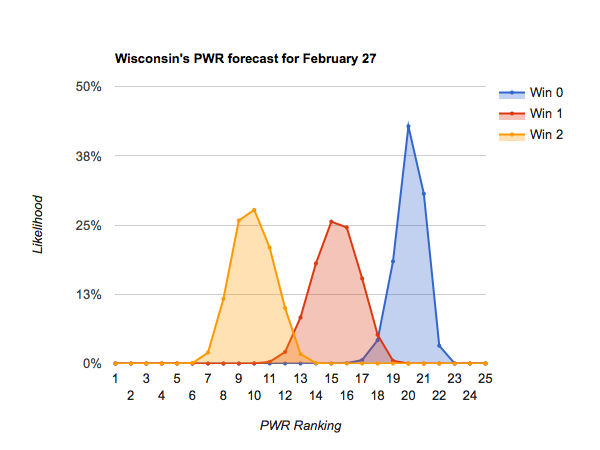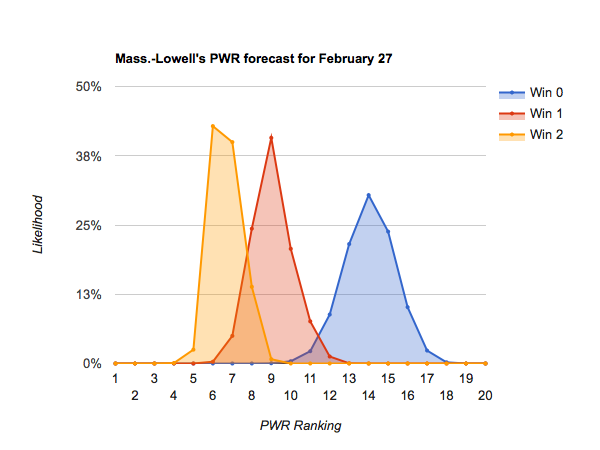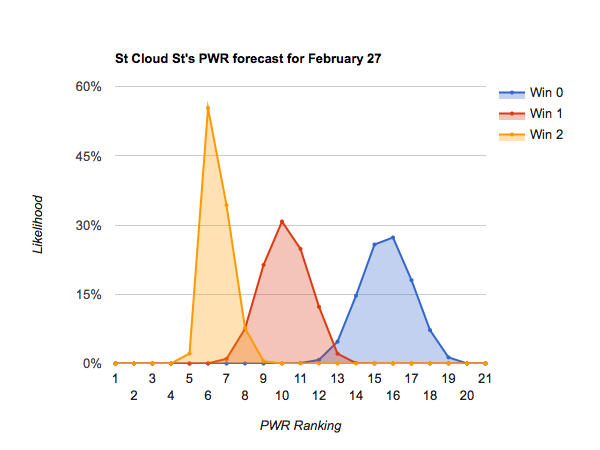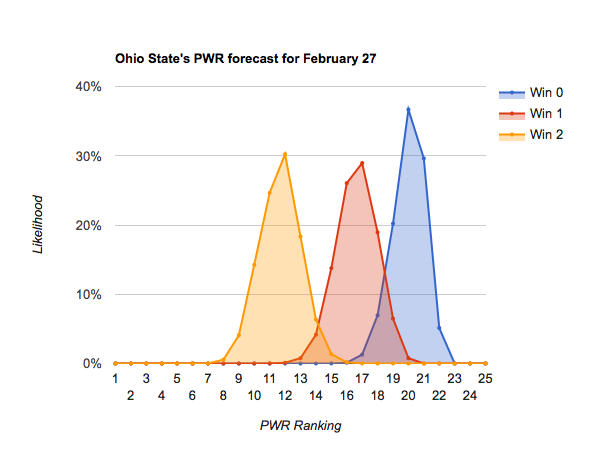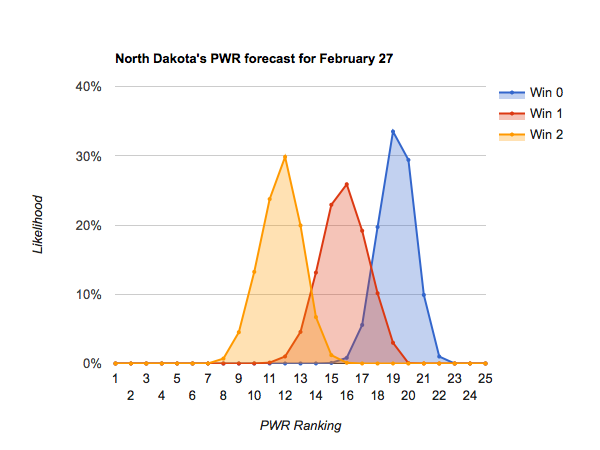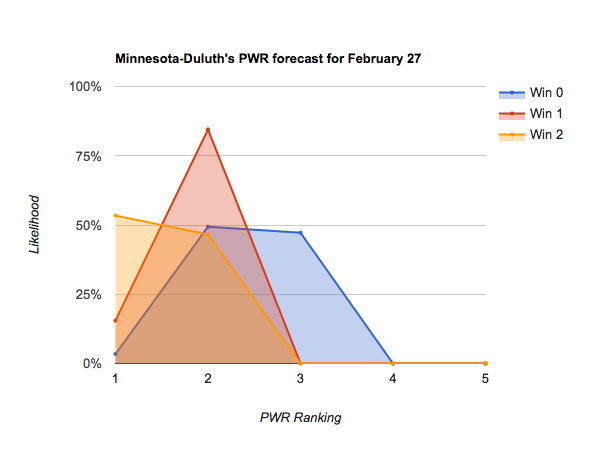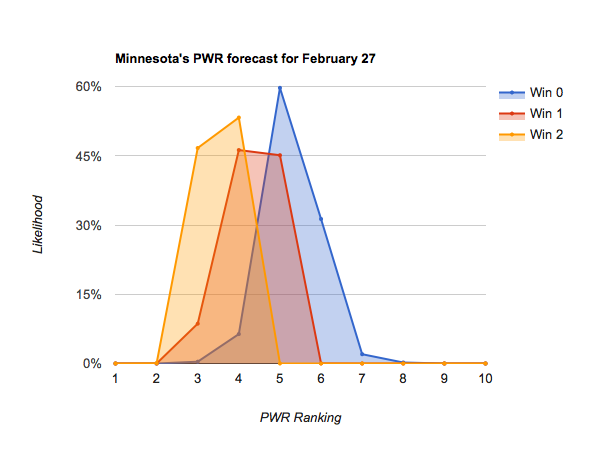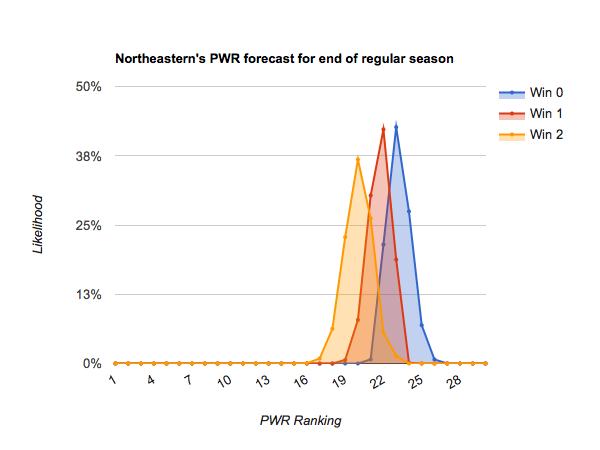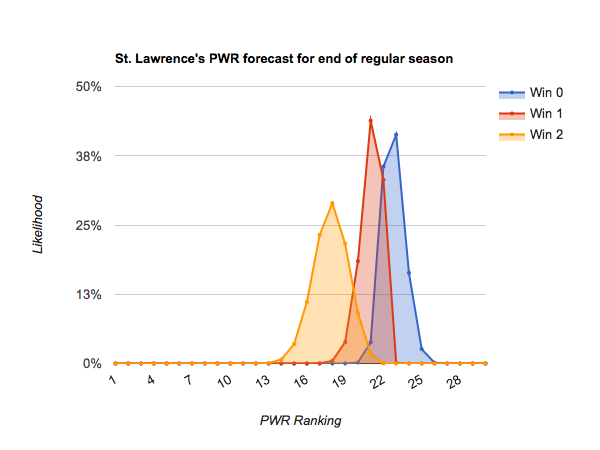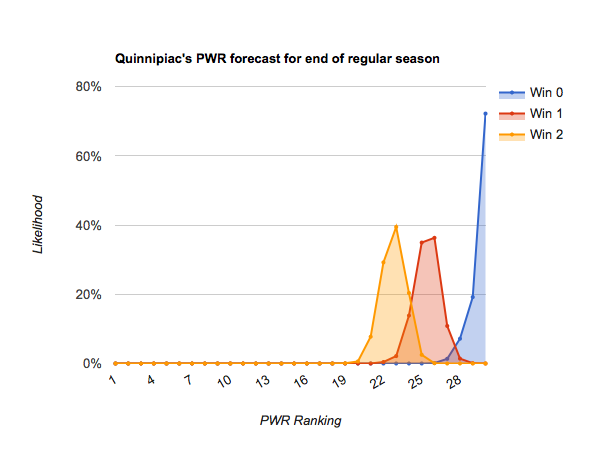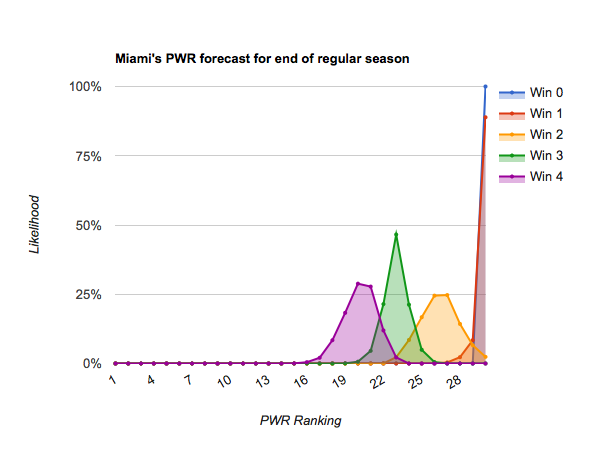This article looks at the most interesting outcomes of games this weekend, with a focus on what PWR might look like next Monday. If you want a more general analysis of the remaining regular season and NCAA tournament likelihood, check out the article, NCAA tournament outlook as conferences enter final regular season weekend, and the table, Wins needed to likely end regular season at PWR rank.
Biggest upside potential
#20 Wisconsin, visiting the red hot #4 Gophers in Minneapolis, has an opportunity to surge. The Badgers could climb to the 9-11 range with a sweep (as high as 7 is realistic), but will likely just stay put if swept. Of course, in the long run staying put is not good enough for the Badgers who needs 3-4 wins in their final 6 games to climb to the bubble (see NCAA tournament outlook).
#18 Boston College has a similar opportunity facing #8 Mass.-Lowell for a home-and-home series. Sweeping would provide a broad range of possible outcomes, from #8-#15 quite possible. Getting swept would likely result in a modest decline to the 19-20 range.
Biggest downside potential
As past readers of these articles know, just as teams around #20 usually have the most upside potential, teams around #10 usually have the most potential to fall.
#10 Cornell faces the most downside potential, with ranks 15-21 possible if swept by Rensselaer and Union. Given that these are the last two games of the regular season for Cornell, that would put the Big Red firmly on the bubble.
#9 Providence faces a similar outlook, with ranks 15-20 possible with a pair of losses to Massachusetts.
All of #8 Mass.-Lowell, #11 Penn State, #12 St Cloud St, #13 Ohio St, and #14 North Dakota face similar chances of a slightly more modest plunge with a pair of losses. Only Mass.-Lowell’s regular season ends this weekend, so others would have some opportunity to recover.
Top seeds?
#1 Denver and #2 Minnesota-Duluth each look unlikely to leave the weekend outside of the 1-3 range, regardless of outcome, and one of the two is almost certain to come out #1. Denver doesn’t quite control its own destiny, as Minnesota-Duluth stands about a 10% chance of sneaking into #1 even if both sweep. Other teams fighting for spots in the top 4 this weekend are #3 Harvard, #4 Minnesota, #5 Western Michigan, and #6 Boston University.
Methodology
Forecasts include the results of games played through Tuesday of this week.
Each forecast is based on at least one million monte carlo simulations of the games in the described period. For each simulation, the PairWise Ranking (PWR) is calculated and the results tallied. The probabilities presented in the forecasts are the share of simulations in which a particular outcome occurred.
The outcome of each game in each simulation is determined by random draw, with the probability of victory for each team set by their relative KRACH ratings. So, if the simulation set included a contest between team A with KRACH 300 and team B with KRACH 100, team A will win the game in very close to 75% of the simulations. I don’t simulate ties or home ice advantage.
Resources
- Current PWR Rankings
- Current RPI Rankings
- CHN PWR Rankings (CollegeHockeyNews.com)
- USCHO PWR Rankings (USCHO.com)
- Explanation of how PWR mimics NCAA tournament selection (CollegeHockeyNews.com)
